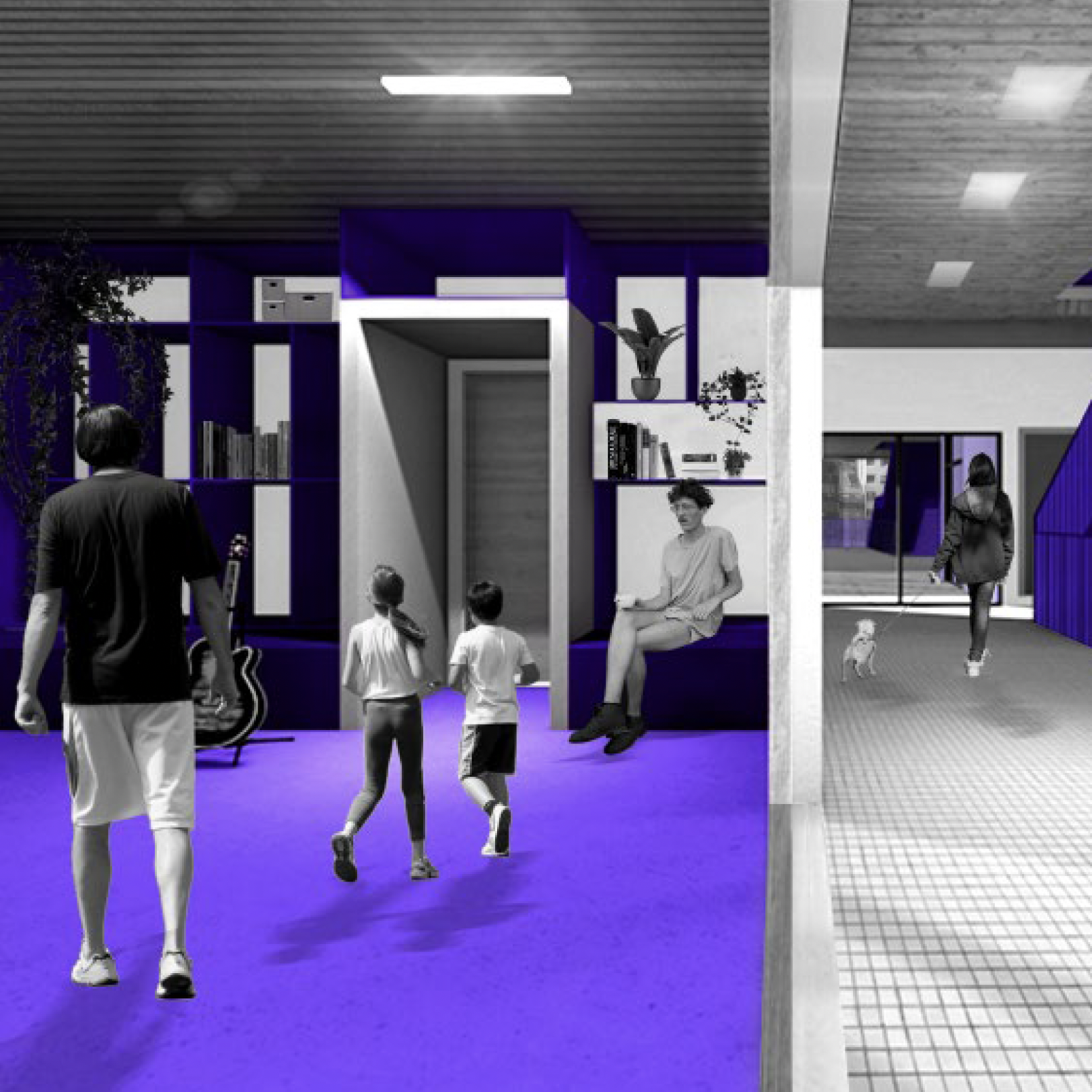Urban voids and their possible futures. Architectural Strategies for Social Inclusion
Main Article Content
Abstract
This article communicates project research1 and its subsequent development2 at the School of Architecture, Design and Urbanism of Universidad de la República. The school's architectural programme includes a care and reintegration centre for people in street situations in Montevideo, Uruguay. The study aims to think about new ways of inhabiting the city sustainably and equitably. The methods employed are mapping, interviews, surveys, and literature reviews. The project investigates the relationship between homelessness and the problem of voids in consolidated and served areas of cities. As a result, a project is developed to decant and verify the operability of the research, proposing a sustainable and disruptive solution to both problems by intensifying the territory and avoiding processes of social gentrification.
Article Details
References
Alexiou, K., Zamenopoulos, T., & Alevizou, G. (2013). Valuing Community-Led Design. AHRC Discussion Paper.
Alzamendia, V., Chappe, B., Martínez, N., Roland, S., & Rosa, D. (2021). PAIE Características arquitectónicas y marco teórico para un centro de atención y reinserción de personas en situación de calle. Facultad de Arquitectura, Diseño y Urbanismo, Universidad de la República, Uruguay.
Arana, M. (2010). Montevideo no es solo un puerto con una ciudad atrás. Crónicas Migrantes.
http://armandolveira.blogspot.com/2010/05/17-de-mayo-un-ano-de-la-muerte-de-mario.html
Bachelard, G. (2002). La poética del espacio. Fondo de Cultura Económica.
Berruete-Martinez, F. J. (2017). Los vacíos urbanos: una nueva definición. Urbano, 20(35), 114–122. https://doi.org/10.22320/07183607.2017.20.35.09
Ciapessoni, F. (2013). Recorridos y desplazamientos de personas que habitan refugios nocturnos [Tesis de maestría, Universidad de la República (Uruguay)].
Constitución de la República Oriental del Uruguay (noviembre 1966). https://www.refworld.org.es/docid/57f76984d.html
Corboz, A. (2004). El territorio como palimpsesto. En Lo urbano en veinte autores contemporáneos. Editions’ UPC.
Dogaru, L. (2021). About sustainability between responsible production and consumption. In Proceedings 2020, 63(1), p. 69. https://doi.org/10.3390/proceedings2020063069
FEANTSA (2005). ETHOS Typology on Homelessness and Housing Exclusion. https://airesasociacion.org/wp-content/uploads/2018/01/ETHOS-AIRES.pdf
INE. (2011). Censo 2011.
https://www.gub.uy/instituto-nacional-estadistica/datos-y-estadisticas/estadisticas/censo-2011
Intendencia Municipal de Montevideo (s.f.). Digesto Departamental. https://normativa.montevideo.gub.uy/volumenes
IPCC (2022). Climate Change 2022: Impacts, Adaptation, and Vulnerability. Contribution of Working Group II to the Sixth Assessment Report of the Intergovernmental Panel on Climate Change. H.-O. Pörtner, D.C. Roberts, M. Tignor, E.S. Poloczanska, K. Mintenbeck, A. Alegría, M. Craig, S. Langsdorf, S. Löschke, V. Möller, A. Okem, B. Rama (Eds.). Cambridge University Press. https://doi.org/10.1017/9781009325844
Jacobs, J. (2011). Muerte y vida de las grandes ciudades. Capitán Swing.
Joore, P., & Brezet, H. (2015). A Multilevel Design Model: The mutual relationship between product-service system development and societal change processes. Journal of Cleaner Production, 97, 92–105. https://doi.org/10.1016/j.jclepro.2014.06.043
Lefebvre, H. (2017). El derecho a la ciudad. Capitán Swing Libros.
Ley N° 18.787. Establece normas sobre la prestación de asistencia obligatoria por parte del Estado a las personas en situación de calle. Agosto 2, 2011. Diario Oficial [D.O.] (Uruguay). http://impo.com.uy/bases/leyes/18787-2011#:~:text=Las%20personas%20de%20cualquier%20edad,que%20un%20m%C3%A9dico%20acredite%20por
Ley N° 19.676. Establece normas sobre declaración de interés general el cumplimiento de los deberes relativos a la propiedad inmueble urbana en los inmuebles urbanos vacíos y degradados. Noviembre 7 de 2018. Diario Oficial [D.O.] (Uruguay). https://www.impo.com.uy/bases/leyes/19676-2018
ONU. (2016). Cumbre Mundial Hábitat III. Quito, Ecuador. https://www.un.org/es/conferences/habitat/quito2016
Oro, L. (2008). La idea de la política en Hannah Arendt. En Revista Enfoques: Ciencia Política y Administración Pública, vol. VI, (pp. 235-246) http://www.redalyc.org/articulo.oa?id=96060909
Pinch, T. & Bijker, W. E. (2008). La construcción social de hechos y artefactos: o acerca de cómo la sociología de la ciencia y la sociología de la tecnología pueden beneficiarse mutuamente. En H. Thomas y A. Buch (Coord.) Actos, actores y artefactos: sociología de la tecnología (pp. 19-62). Universidad Nacional de Quilmes.
Sennett, R. (2019). Introducción. Defectuosa, abierta, modesta. En Construir y habitar. Ética para la ciudad (pp. 9-30). Anagrama.
UNESCO. (2019). Derechos humanos y Agenda 2030 para el Desarrollo Sostenible. UNESCO Etxea. https://www.unetxea.org/dokumentuak/dossier_DDHH_agenda2030.pdf
Valdivia, B. (2021). La ciudad cuidadora: calidad de vida urbana desde una perspectiva feminista [Tesis doctoral, Universitat Politècnica de Catalunya UPC, (España)].


